
The Untamed Beauty of Cradle Mountain-Lake St Clair National Park
Explore the pristine wilderness of Cradle Mountain-Lake St Clair National Park, where ancient rainforests, glacial lakes, and diverse wildlife await your discovery.
Cradle Mountain-Lake St Clair National Park is a stunning wilderness area located in Tasmania, Australia. This park is part of the Tasmanian Wilderness World Heritage Area and offers visitors a chance to experience some of the most pristine natural landscapes in the world. The park is named after Cradle Mountain, which dominates the northern end, and Lake St Clair, which is Australia's deepest freshwater lake, located at the southern end. The park is home to a diverse range of flora and fauna, including ancient rainforests, alpine heathlands, and glacial lakes. Visitors can enjoy numerous hiking trails, ranging from short walks to the famous Overland Track, a six-day trek that traverses the park's rugged terrain. The park also offers opportunities for wildlife spotting, with chances to see wombats, echidnas, and Tasmanian devils. For those looking to immerse themselves in the natural beauty of Tasmania, Cradle Mountain-Lake St Clair National Park provides a perfect escape. Whether you're an avid hiker, a nature lover, or simply seeking tranquility, this park has something to offer everyone. With its breathtaking scenery and rich biodiversity, it's a destination that will leave a lasting impression.
Local tips in Cradle Mountain-Lake St Clair National Park
- Pack warm clothing, even in summer, as the weather can be unpredictable and temperatures can drop suddenly.
- Book accommodation well in advance, especially during peak tourist seasons, to ensure you have a place to stay.
- Carry sufficient food and water if you plan to hike, as there are limited facilities within the park.
- Hire a guide for the Overland Track if you're not an experienced hiker, as the terrain can be challenging.
- Respect the natural environment by staying on marked trails and taking all rubbish with you.
The Untamed Beauty of Cradle Mountain-Lake St Clair National Park
Cradle Mountain-Lake St Clair National Park is a stunning wilderness area located in Tasmania, Australia. This park is part of the Tasmanian Wilderness World Heritage Area and offers visitors a chance to experience some of the most pristine natural landscapes in the world. The park is named after Cradle Mountain, which dominates the northern end, and Lake St Clair, which is Australia's deepest freshwater lake, located at the southern end. The park is home to a diverse range of flora and fauna, including ancient rainforests, alpine heathlands, and glacial lakes. Visitors can enjoy numerous hiking trails, ranging from short walks to the famous Overland Track, a six-day trek that traverses the park's rugged terrain. The park also offers opportunities for wildlife spotting, with chances to see wombats, echidnas, and Tasmanian devils. For those looking to immerse themselves in the natural beauty of Tasmania, Cradle Mountain-Lake St Clair National Park provides a perfect escape. Whether you're an avid hiker, a nature lover, or simply seeking tranquility, this park has something to offer everyone. With its breathtaking scenery and rich biodiversity, it's a destination that will leave a lasting impression.
When is the best time to go to Cradle Mountain-Lake St Clair National Park?
Iconic landmarks you can’t miss
Cradle Mountain Visitor Centre
Explore the Cradle Mountain Visitor Centre, your gateway to the breathtaking landscapes and rich biodiversity of Tasmania's iconic national park.

Devils@Cradle
Discover Tasmania's unique wildlife at Devils@Cradle, a sanctuary dedicated to conservation and education in the stunning Cradle Mountain region.

Lake St Clair Visitor Centre
Explore the breathtaking landscapes of Lake St Clair, a gateway to Tasmania's wilderness, offering adventure, tranquility, and nature's beauty.

Dove Lake Boatshed
Discover the serene beauty of Dove Lake Boatshed, a picturesque retreat in Cradle Mountain National Park, perfect for nature lovers and photographers.

Cradle Mountain Interpretation Centre & Ranger Station
Explore Cradle Mountain Interpretation Centre & Ranger Station, your gateway to Tasmania's majestic natural beauty and outdoor adventures.

Marions Lookout
Discover the stunning vistas of Marions Lookout, a must-see observation deck in Cradle Mountain National Park, Tasmania, perfect for nature lovers and hikers alike.

Cradle Mountain
Explore Cradle Mountain, a UNESCO World Heritage site in Tasmania, known for its stunning landscapes, diverse wildlife, and outdoor adventures.

Cradle Mountain Canyons
Experience breathtaking landscapes and thrilling canyoning adventures in Cradle Mountain Canyons, Tasmania's natural wonder and outdoor paradise.
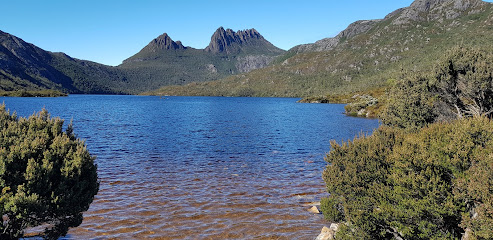
Crater Lake Lookout
Experience breathtaking views and natural beauty at Crater Lake Lookout in Cradle Mountain, Tasmania, a perfect destination for nature lovers and photographers.

Enchanted Walk
Experience the breathtaking beauty of Cradle Mountain on the Enchanted Walk, a scenic hiking trail showcasing Tasmania's natural wonders.

Pencil Pine Falls
Explore the stunning Pencil Pine Falls in Cradle Mountain, Tasmania, where cascading waterfalls meet lush wilderness for an unforgettable nature experience.

Dove Lake Circuit
Experience the breathtaking beauty of Dove Lake Circuit in Tasmania, where hiking meets stunning landscapes and rich wildlife encounters.

Knyvet Falls
Explore Knyvet Falls in Cradle Mountain, Tasmania – a breathtaking waterfall surrounded by lush landscapes, perfect for nature lovers and adventurers.

Lake St Clair
Explore the breathtaking beauty of Lake St Clair, Tasmania's deepest lake surrounded by pristine wilderness and endless outdoor adventures.

Narcissus Hut
Explore the breathtaking landscapes at Narcissus Hut, a tranquil retreat in Tasmania's Lake St Clair National Park, perfect for nature lovers and adventurers.
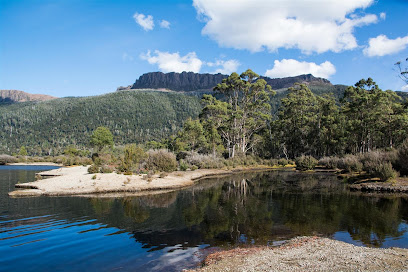
Unmissable attractions to see
Cradle Mountain Visitor Centre
Explore Cradle Mountain Visitor Centre: Your gateway to Tasmania's stunning landscapes and rich wildlife experiences.

Cradle Mountain Visitor Centre
Explore Cradle Mountain Visitor Centre: Your gateway to Tasmania's stunning landscapes, wildlife, and rich cultural heritage.

Mole Creek Caves
Explore the breathtaking Mole Creek Caves in Tasmania's National Park, where nature's wonders meet extraordinary limestone formations.

Marakoopa Cave
Explore the mesmerizing Marakoopa Cave in Tasmania, where stunning limestone formations and enchanting glow worms create an unforgettable underground adventure.

King Solomons Cave
Discover the stunning underground world of King Solomon's Cave, a must-see natural wonder in Tasmania's Mole Creek Karst National Park.

Devil's Gullet Lookout
Experience the stunning panoramic views at Devil's Gullet Lookout, a must-see destination for nature lovers in Tasmania's Central Plateau.

Crater Lake Lookout
Experience breathtaking panoramic views at Crater Lake Lookout, the crown jewel of Tasmania's stunning Cradle Mountain National Park.

Enchanted Walk
Explore the Enchanted Walk at Cradle Mountain, where nature's beauty and tranquility create an unforgettable hiking experience in Tasmania.

Pencil Pine Falls
Discover the breathtaking beauty of Pencil Pine Falls in Cradle Mountain, Tasmania—a nature lover's paradise with stunning scenery and tranquil ambiance.

Knyvet Falls
Explore the breathtaking Knyvet Falls in Cradle Mountain, Tasmania, where nature's beauty and tranquility await every visitor.
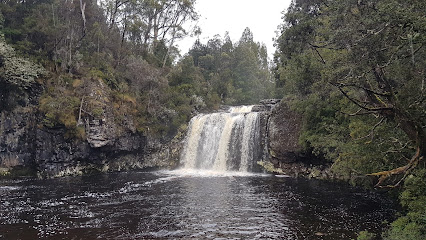
Cradle365 Photo Holder
Discover the breathtaking views and natural beauty of Cradle365 Photo Holder in Cradle Mountain, Tasmania—a paradise for photographers and nature lovers.

Narcissus Hut
Explore the breathtaking landscapes of Narcissus Hut, your gateway to Tasmania's stunning Overland Track and serene Lake St Clair.

New Pelion Hut
Discover tranquility and adventure at New Pelion Hut, a serene retreat in Tasmania's breathtaking Cradle Mountain-Lake St Clair National Park.

Waldheim Chalet
Experience the breathtaking beauty and rich history of Waldheim Chalet in Cradle Mountain, Tasmania – a must-visit destination for nature lovers and adventurers.

Face Track
Explore Face Track in Cradle Mountain, Tasmania—a breathtaking hiking destination offering stunning landscapes and diverse wildlife for all adventurers.

Essential places to dine
Cradle Mountain-Lake St Clair National Park
Explore Cradle Mountain-Lake St Clair National Park: Tasmania's breathtaking natural wonder with stunning views and abundant wildlife.

Cradle Mountain Wilderness Village
Discover tranquility and adventure at Cradle Mountain Wilderness Village - your gateway to Tasmania's stunning natural beauty.

Hungry Wombat Cafe
Experience the charm of Hungry Wombat Cafe in Tasmania - where delicious meals meet breathtaking landscapes.

Tavern Bar & Bistro
Discover delightful Tasmanian cuisine at Tavern Bar & Bistro in Cradle Mountain National Park - perfect for unwinding after outdoor adventures.

Cradle Mountain Wilderness Village Restaurant
Discover exquisite local cuisine amidst stunning landscapes at Cradle Mountain Wilderness Village Restaurant in Tasmania.

THE OLD BLACK STUMP Restaurant and Function Room
Experience authentic Tasmanian cuisine at The Old Black Stump Restaurant in Gowrie Park – where local flavors meet warm hospitality.

Highland Restaurant
Experience modern Australian cuisine surrounded by breathtaking views in Cradle Mountain National Park.

Villarett Gardens
Discover Villarett Gardens: A tranquil Tasmanian oasis blending stunning landscapes with gourmet dining experiences.

Altitude Restaurant + Lounge Bar
Experience fine dining with breathtaking views at Altitude Restaurant + Lounge Bar in Cradle Mountain, Tasmania – where every meal is a celebration of local flavors.

Elements Cafe
Discover comfort and flavor at Elements Cafe in Cradle Mountain—your perfect retreat amidst Tasmania's natural beauty.

Tullah Lakeside Bar & Grill
Experience exquisite dining with breathtaking lake views at Tullah Lakeside Bar & Grill – where Tasmanian flavors meet serene landscapes.

Restaurant @ Great Lake Hotel
Experience exquisite dining amidst stunning landscapes at the Great Lake Hotel Restaurant in Tasmania.

Markets, malls and hidden boutiques
Cradle Mountain Visitor Centre
Explore Tasmania's natural beauty at the Cradle Mountain Visitor Centre, your gateway to stunning landscapes and rich wildlife.

Cradle Mountain-Lake St Clair National Park
Explore Cradle Mountain-Lake St Clair National Park, a breathtaking wilderness of stunning landscapes and rich wildlife in Tasmania, perfect for outdoor adventures.

Reliquaire
Explore Reliquaire, a whimsical gift shop in Latrobe, Tasmania, featuring unique toys, games, and delightful treasures for all ages.

Lake St Clair Visitor Centre
Discover the natural wonders of Tasmania at Lake St Clair Visitor Centre, your gateway to breathtaking landscapes and unforgettable outdoor adventures.

Dove Lake Boatshed
Experience stunning natural beauty at Dove Lake Boatshed, a picturesque retreat in Cradle Mountain National Park, Tasmania.

Cradle Mountain Interpretation Centre & Ranger Station
Explore the Cradle Mountain Interpretation Centre & Ranger Station, your gateway to Tasmania's breathtaking wilderness and rich natural history.
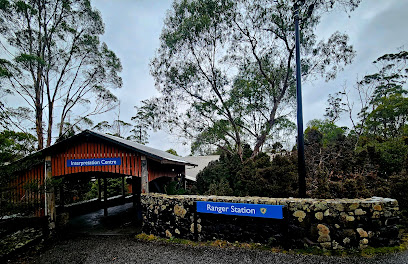
Marions Lookout
Experience the stunning vistas of Cradle Mountain and Dove Lake at Marions Lookout, a must-visit observation deck in Tasmania's breathtaking wilderness.

Great Lake General Store
Explore the essence of Tasmania at the Great Lake General Store, where local culture meets scenic beauty.

Slaters Country Store
Experience the best of Tasmanian shopping at Slaters Country Store, where quality clothing meets local charm in Sheffield.

Pencil Pine Falls
Discover the breathtaking beauty of Pencil Pine Falls, a stunning waterfall surrounded by lush rainforest in Cradle Mountain, Tasmania.

SEPPENFELTS Emporium, Gifts & Books
Explore SEPPENFELTS Emporium in Deloraine, Tasmania: a unique gift shop offering local crafts, books, and clothing that celebrate Tasmanian culture.

Elements Cafe
Experience the warmth of Elements Cafe in Cradle Mountain, where local flavors and breathtaking views unite for an unforgettable visit.

Lake St Clair
Experience the breathtaking beauty of Lake St Clair, Tasmania's serene lake surrounded by stunning landscapes and diverse wildlife.

Lake St Clair National Park
Explore the breathtaking landscapes and rich wildlife of Lake St Clair National Park, a true gem in Tasmania's wilderness.

Under the Oak
Discover the essence of Tasmania through handcrafted gifts and local treasures at Under the Oak in Ulverstone.
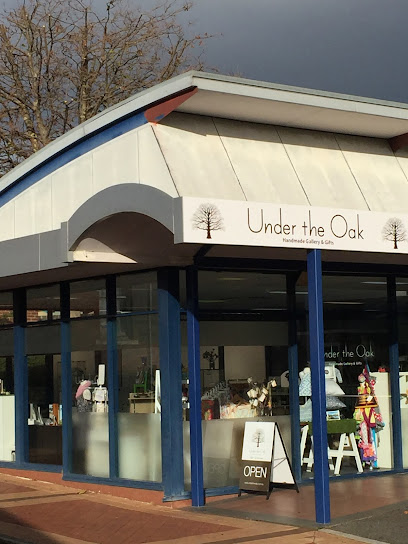
Essential bars & hidden hideouts
Cradle Mountain Wilderness Village
Discover the perfect blend of nature and comfort at Cradle Mountain Wilderness Village, a serene haven in Tasmania's stunning wilderness.

Dove Lake Boatshed
Explore the breathtaking beauty of Dove Lake Boatshed, a must-visit attraction in Tasmania's Cradle Mountain National Park, perfect for nature lovers and photographers.
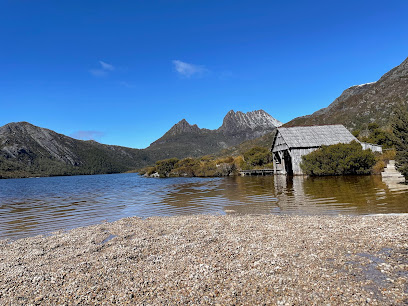
Tullah Lakeside Lodge
Discover tranquility at Tullah Lakeside Lodge in Tasmania, where nature meets comfort, offering a unique experience by the serene lake.

Tavern Bar & Bistro
Experience local flavors and a cozy atmosphere at the Tavern Bar & Bistro in Cradle Mountain, Tasmania, the perfect retreat after a day of adventure.

Marions Lookout
Experience awe-inspiring views and serene trails at Marions Lookout, a premier observation deck in Cradle Mountain National Park, Tasmania.

Cradle Highlander
Discover the beauty of Cradle Mountain at Cradle Highlander, your perfect retreat for adventure and relaxation in Tasmania.

Pumphouse Point
Experience the breathtaking beauty and tranquility of Pumphouse Point, a luxurious retreat on Tasmania's stunning Lake St Clair.

Cradle Mountain Wilderness Village Restaurant
Discover the Cradle Mountain Wilderness Village Restaurant, where local flavors meet stunning natural beauty in the heart of Tasmania.

Wandering Trout - Gourmet Stays
Experience Tasmania's culinary delights at Wandering Trout, where gourmet dining meets cozy lodge accommodations amidst stunning mountain views.

Tullah Tavern
Discover the warmth of Tullah Tavern, a cozy pub in Tasmania offering hearty meals, local brews, and a friendly atmosphere for all visitors.

Highland Restaurant
Discover the flavors of Tasmania at Highland Restaurant, where modern Australian cuisine meets breathtaking natural beauty.
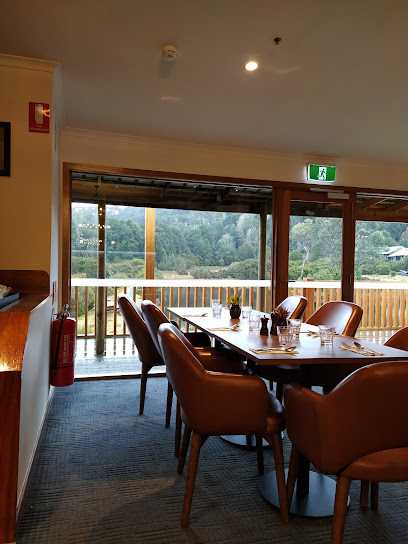
Enchanted Walk
Explore the enchanting beauty of Enchanted Walk, a hiking paradise in Tasmania's Cradle Mountain National Park, where nature unveils its magical wonders.
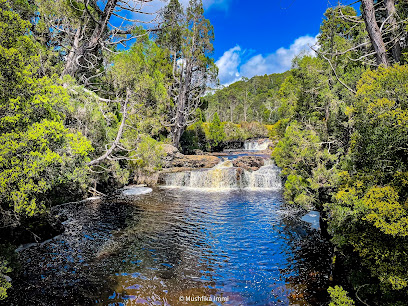
The Top Pub
Experience the heart of Tasmania at The Top Pub in Rosebery, where local brews and friendly vibes await every traveler.

Altitude Restaurant + Lounge Bar
Experience the flavors of Tasmania with breathtaking views at Altitude Restaurant + Lounge Bar, the perfect dining spot in Cradle Mountain.

Pencil Pine Falls
Experience the tranquility and natural beauty of Pencil Pine Falls, a stunning waterfall in Tasmania's Cradle Mountain National Park, perfect for nature lovers.
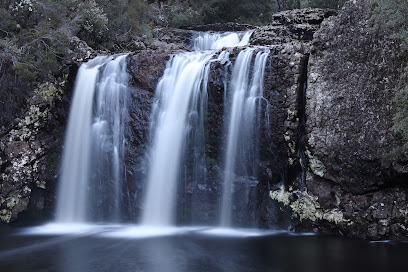
Local Phrases about Cradle Mountain-Lake St Clair National Park
-
- HelloG'day
[g'day] - GoodbyeSee ya
[see ya] - YesAye
[aye] - NoNah
[nah] - Please/You're welcomeNo worries
[no worries] - Thank youCheers
[cheers] - Excuse me/SorrySorry mate
[sorry mate] - How are you?How ya goin'?
[how ya goin'] - Fine. And you?Good. You?
[good. you?] - Do you speak English?Y' speak English?
[y' speak english?] - I don't understandI'm lost
[I'm lost]
- HelloG'day
-
- I'd like to see the menu, pleaseMenu, please
[menu, please] - I don't eat meatNo meat for me
[no meat for me] - Cheers!Cheers!
[cheers!] - I would like to pay, pleaseBill, please
[bill, please]
- I'd like to see the menu, pleaseMenu, please
-
- Help!Help!
[help!] - Go away!Bugger off!
[bugger off!] - Call the Police!Police!
[police!] - Call a doctor!Doctor!
[doctor!] - I'm lostLost
[lost] - I'm illSick
[sick]
- Help!Help!
-
- I'd like to buy...I wanna buy...
[I wanna buy...] - I'm just lookingJust browsing
[just browsing] - How much is it?How much?
[how much?] - That's too expensiveToo pricey
[too pricey] - Can you lower the price?Cheaper?
[cheaper?]
- I'd like to buy...I wanna buy...
-
- What time is it?What's the time?
[what's the time?] - It's one o'clockIt's one
[it's one] - Half past (10)Half ten
[half ten] - MorningMornin'
[mornin'] - AfternoonArvo
[arvo] - EveningEvenin'
[evenin'] - YesterdayYesty
[yesty] - TodayToday
[today] - TomorrowTomorra
[tomorra] - 1One
[one] - 2Two
[two] - 3Three
[three] - 4Four
[four] - 5Five
[five] - 6Six
[six] - 7Seven
[seven] - 8Eight
[eight] - 9Nine
[nine] - 10Ten
[ten]
- What time is it?What's the time?
-
- Where's a/the...?Where's the...?
[where's the...?] - What's the address?Address?
[address?] - Can you show me (on the map)?Show me (on map)?
[show me (on map)?] - When's the next (bus)?Next (bus)?
[next (bus)?] - A ticket (to ....)Ticket (to ...)
[ticket (to ...)]
- Where's a/the...?Where's the...?
History of Cradle Mountain-Lake St Clair National Park
-
The Cradle Mountain-Lake St Clair area is part of the traditional lands of the Palawa people. Archaeological findings suggest that Indigenous Australians have lived in the region for over 10,000 years. The landscape, rich in natural resources, provided food, shelter, and materials for tools and clothing. The Palawa people have a deep spiritual connection to the land, which is reflected in their stories, songs, and cultural practices.
-
The first recorded European exploration of the Cradle Mountain area was conducted by surveyor Henry Hellyer in 1827. Hellyer, working for the Van Diemen's Land Company, was tasked with mapping the region and assessing its suitability for agriculture and settlement. His detailed journals and sketches provide the earliest European descriptions of the area's rugged terrain and stunning natural beauty.
-
Cradle Mountain-Lake St Clair National Park was formally established in 1922, thanks to the efforts of conservationists like Gustav Weindorfer. An Austrian immigrant, Weindorfer was captivated by the area's pristine wilderness and envisioned it as a national park for all to enjoy. He built a chalet near Cradle Mountain, where he hosted guests and advocated for the area's protection. His vision laid the groundwork for the park's eventual establishment.
-
The Overland Track, one of Australia's premier long-distance hiking trails, was officially established in the 1930s. The track stretches approximately 65 kilometers from Cradle Mountain to Lake St Clair, traversing diverse landscapes including alpine meadows, ancient rainforests, and glacial lakes. Early development of the track involved significant efforts from volunteers and workers, who built huts and cleared paths to make the trail accessible to adventurers.
-
In 1982, Cradle Mountain-Lake St Clair National Park was inscribed on the UNESCO World Heritage List as part of the Tasmanian Wilderness World Heritage Area. This recognition was due to the park's outstanding natural value, including its diverse ecosystems, unique flora and fauna, and significant geological features. The World Heritage listing has helped to ensure the ongoing protection and conservation of this remarkable landscape.
-
In recent decades, there has been a growing focus on conservation and sustainable tourism within Cradle Mountain-Lake St Clair National Park. Efforts include the restoration of native vegetation, the control of invasive species, and the implementation of eco-friendly tourism practices. The park is managed by the Tasmanian Parks and Wildlife Service, which works to balance conservation goals with the needs of visitors and local communities.
Cradle Mountain-Lake St Clair National Park Essentials
-
Cradle Mountain-Lake St Clair National Park is located in Tasmania, Australia. The nearest airport is Launceston Airport, approximately 2.5 hours' drive to the north of Cradle Mountain. Alternatively, you can fly into Hobart International Airport which is about a 4-hour drive to the south. From either airport, you can rent a car, which is the most convenient way to explore the park. Additionally, there are tour operators offering shuttle services directly to the park from both Launceston and Hobart.
-
Within Cradle Mountain-Lake St Clair National Park, the primary means of getting around is by car. There are well-maintained roads and ample parking at various points of interest. Shuttle buses operate within the park, taking visitors to key locations, including Dove Lake and the visitor center. For those looking to hike, the Overland Track is a popular multi-day trek that traverses the park. Bicycles are also permitted on certain trails.
-
The official currency in Australia is the Australian Dollar (AUD). Credit cards are widely accepted in most establishments within and around the park, including hotels, restaurants, and shops. However, it's advisable to carry some cash for smaller transactions or in case of technical issues with card payments. ATMs are available at major visitor centers, but it's wise to withdraw sufficient cash before arriving at more remote areas.
-
Cradle Mountain-Lake St Clair National Park is generally a safe destination for tourists. However, standard safety precautions should be observed. Always stay on marked trails and inform someone of your plans if you are hiking alone. Wildlife encounters are common; maintain a safe distance from animals. While there are no specific high-crime areas targeting tourists, it is always best to stay vigilant and secure your belongings.
-
In case of an emergency, dial 000 for police, fire, or medical assistance. The park has several emergency call devices located at key points. It is recommended to carry a basic first aid kit and inform park rangers of your hiking plans. Travel insurance that covers medical emergencies is advisable. There are medical facilities in nearby towns such as Sheffield and Deloraine.
-
Fashion: Do wear appropriate outdoor clothing and sturdy footwear. Weather can change rapidly, so layers are recommended. Religion: The park does not have specific religious customs, but always show respect for natural surroundings. Public Transport: Do use the shuttle bus service to reduce environmental impact. Don't litter and use designated bins. Greetings: Do greet fellow hikers and park staff with a smile or a friendly 'hello'. Eating & Drinking: Do carry sufficient water and snacks. Don’t feed wildlife as it can be harmful to them.
-
To experience Cradle Mountain-Lake St Clair National Park like a local, consider visiting during the shoulder seasons (spring and autumn) for fewer crowds and stunning foliage. Early mornings and late afternoons offer the best light for photography. Engage with park rangers and local guides to learn about the unique flora and fauna. Don’t miss the opportunity to try local Tasmanian produce at nearby eateries; cheese, honey, and salmon are particularly recommended. Lastly, take your time to soak in the serene beauty of Dove Lake and the surrounding peaks.
Trending Landmarks in Cradle Mountain-Lake St Clair National Park
-
Cradle Mountain Visitor Centre
-
Devils@Cradle
-
Lake St Clair Visitor Centre
-
Dove Lake Boatshed
-
Cradle Mountain Interpretation Centre & Ranger Station
-
Marions Lookout
-
Cradle Mountain
-
Cradle Mountain Canyons
-
Crater Lake Lookout
-
Enchanted Walk
-
Pencil Pine Falls
-
Dove Lake Circuit
-
Knyvet Falls
-
Lake St Clair
-
Narcissus Hut
Nearby Cities to Cradle Mountain-Lake St Clair National Park
-
Things To Do in Melbourne
-
Things To Do in Canberra
-
Things To Do in Sydney
-
Things To Do in Adelaide
-
Things To Do in Kangaroo Island
-
Things To Do in Byron Bay
-
Things To Do in Gold Coast
-
Things To Do in Surfers Paradise
-
Things To Do in Brisbane
-
Things To Do in Noosa
-
Things To Do in Invercargill
-
Things To Do in Queenstown
-
Things To Do in Wanaka
-
Things To Do in Dunedin
-
Things To Do in Timaru












